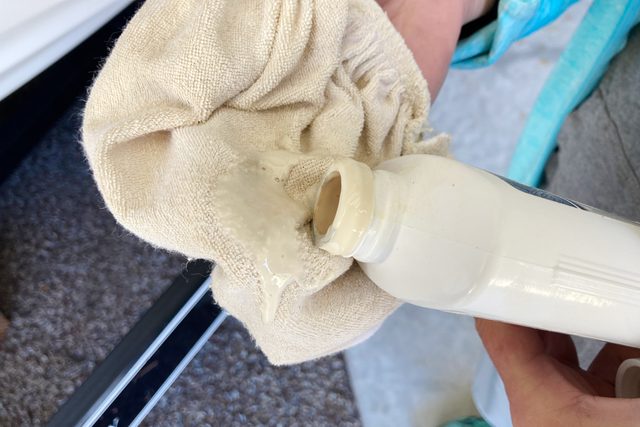How To Wax a Boat
Boats are made for fun in the sun, but that sun (and water) dulls the surface over time. Learn how to wax a boat and get it shining like new.
Our editors and experts handpick every product we feature. We may earn a commission from your purchases.
A half day
Beginner
$50-100
Introduction
For rest and relaxation, there's nothing quite like a boat. Whether you like speeding atop the water or anchoring in a quiet cove, boats provide us plenty of R&R. But they need a little TLC, too.
Fiberglass boats are covered with a protective resin called a gelcoat. It gives your boat a smooth, glossy finish, but needs to be maintained periodically. Waxing your boat every few months, especially if you keep it outside, prevents the sun from dulling, pitting or oxidizing the gelcoat.
What product you choose depends on the state of your hull. If the finish is in good shape, a soft paste wax will keep it that way. Marine polishes contain abrasives to smooth imperfections, leaving a glossy finish. Heavily oxidized, chalky gelcoats should be restored with a rubbing compound before waxing.
I'm using a cleaner wax, which combines the protective coating of wax with the slight abrasive quality of polish.
Tools Required
- Bucket
- Dual action polisher (optional)
- Garden hose
- Microfiber cloths or soft towels
- Microfiber wash mitt
- Telescoping wand
Materials Required
- Boat compound (optional)
- Boat polish (optional)
- Boat soap
- Boat wax
Project step-by-step (6)
Cover
- Cover your boat unless you plan to wash the interior as well.
Wash
- Rinse with a garden hose to remove loose dirt or algae.
- Use your finger or a garden sprayer to concentrate spray.
- Avoid power washing, which can damage your gelcoat.
- Add boat wash to your bucket and fill with water.
- Check the package directions, but three capfuls should make a nice soapy solution.
- Scrub the hull with the telescoping wand and microfiber mitt.
- A hand mitt works, too, but will take longer.
- Rinse hull with the garden hose.
Dry
- Allow hull to air dry, or wipe it dry with a chamois or microfiber cloth.
- Never wax a wet boat. Wax won’t adhere to a wet surface.
Wax
- Work in small sections, approximately 3-ft. by 3-ft.
- Apply a quarter-sized dollop of wax to soft towel or microfiber cloth.
- I used about three-quarters of a 16-ounce bottle of cleaner wax to wax this 25-foot boat.
- Rub wax into hull with small circular motions.
- Wax will dry to a hazy finish.
- Go with a dual action polisher if you have a really large boat or don’t feel like waxing by hand.
- Be caution with polishers. And never use an orbital sander, because the revolutions per minute (rpms) are too high.
Buff
- Once each section has dried, buff the section with a soft towel or microfiber cloth.
- Use a dual-action polisher with a microfiber bonnet, if desired.
- Rub the towel in circular motions to remove the wax and buff the boat.
- When the boat has a shiny, mirror finish, the job is done.
Compound (Optional)
- Compound your boat if the gelcoat is heavily oxidized.
- Perform this step before waxing or polishing.
- Apply compound by hand or with a dual-action polisher, working in small sections.
- Rubbing compound is abrasive, so use care.
- Wipe off compound with soft towel or polisher with bonnet.
- Finish with a marine polish or wax.
- Check the compound instructions for the proper finishing step.







